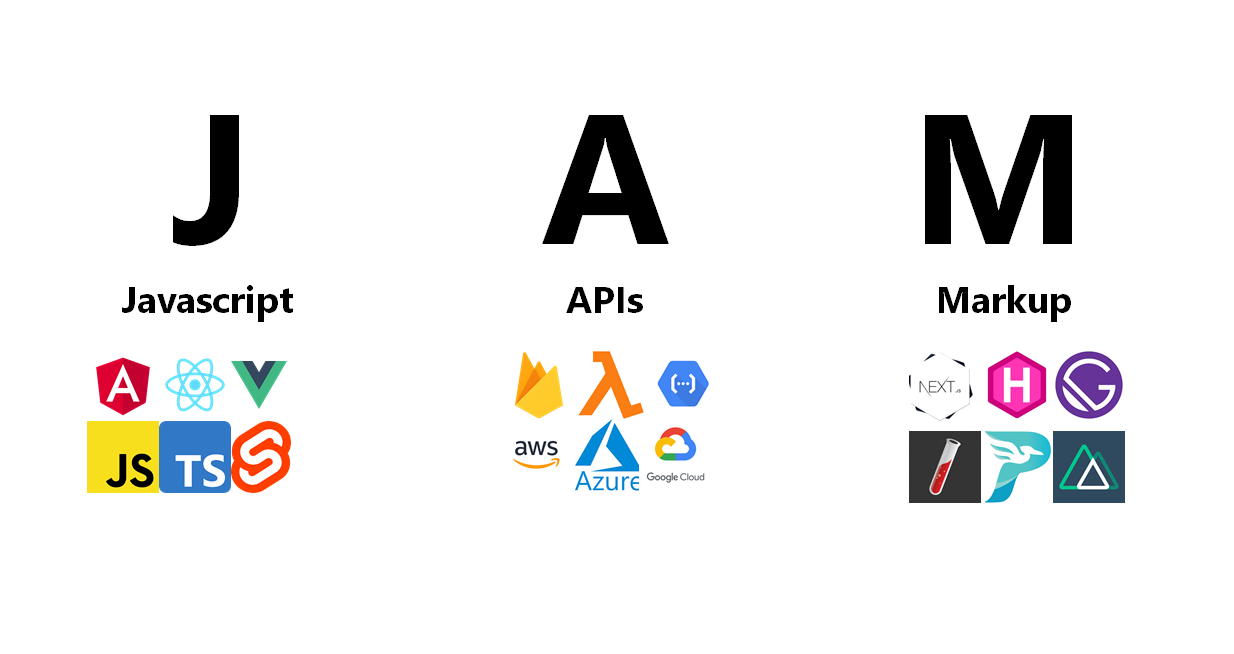Jamstack Architecture: A Simple Guide
 Ashish Bhangale
Ashish Bhangale
Introduction: What is Jamstack?
Jamstack is a modern web development architecture that is changing how websites are built and delivered. The name Jamstack stands for JavaScript, APIs, and Markup. It separates the front-end (the part users see) from the back-end (where the data is stored and processed). This allows developers to create faster, more secure, and scalable websites.
Unlike traditional websites, which rely heavily on a server to build and deliver each page, Jamstack sites are pre-built. This means that when a user visits the site, it loads much faster because the page is already created and stored on a Content Delivery Network (CDN).
How Jamstack Works:
JavaScript (J)
JavaScript is used to make the website interactive. It can handle everything from simple animations to more complex tasks like fetching data from a server and displaying it without refreshing the page.APIs (A)
APIs (Application Programming Interfaces) are used to communicate with external services. Instead of relying on a single server to do everything (like in traditional web development), Jamstack websites pull data from different APIs, whether it’s a database, payment service, or social media platform.Markup (M)
Markup refers to the pre-built HTML code that creates the structure of the website. These HTML files are generated in advance, which allows the site to load quickly because it’s already ready when the user visits.
Advantages of Jamstack:
Speed
Since Jamstack sites are pre-built and hosted on a CDN, they load much faster compared to traditional websites. There’s no need to wait for a server to generate a page for every request. This is crucial for better user experience and even helps with SEO (Search Engine Optimization) rankings.Security
Jamstack sites are more secure because there is no direct connection to a server or database that can be hacked. By using APIs to handle sensitive tasks like authentication or payments, developers can minimize the risk of attacks.Scalability
Scaling a Jamstack website is easier because the content is served from a CDN, which can handle a high volume of users without slowing down the site. You don’t need a powerful back-end server to handle spikes in traffic.
Real-Life Example: An E-Commerce Store
Imagine you’re building an e-commerce website to sell clothing. In a traditional website setup, every time a user visits a product page, the server would fetch the data from a database and build the page dynamically. This can take time and strain the server, especially if there are a lot of users on the site at once.
In a Jamstack setup, the product pages are pre-built using the product information. When a customer clicks on a product, the page loads instantly because it’s already created and sitting on a fast CDN. If the product details change (like price or availability), an API updates the content in real-time without slowing down the site. Plus, the site can easily scale on busy days (like Black Friday) without worrying about crashing servers.
Popular Jamstack Tools:
Next.js or Gatsby for building static websites using React (JavaScript).
Netlify or Vercel for deploying and hosting Jamstack sites.
Contentful or Sanity as headless CMS (Content Management Systems) for managing and delivering content via APIs.
Conclusion:
Jamstack architecture offers a new way to build websites that are faster, more secure, and easier to scale. By separating the front-end from the back-end and using modern technologies like JavaScript, APIs, and pre-built markup, Jamstack helps developers create better web experiences. Whether you’re building an e-commerce store or a blog, Jamstack is a powerful approach for the future of web development.
Subscribe to my newsletter
Read articles from Ashish Bhangale directly inside your inbox. Subscribe to the newsletter, and don't miss out.
Written by

Ashish Bhangale
Ashish Bhangale
I am a dedicated web developer with a strong focus on Java and a keen interest in AWS and cloud computing. Currently pursuing my MCA, I am driven by a passion for exploring emerging technologies and solving complex problems. As an aspiring software engineer, I am committed to leveraging my skills to create impactful solutions. In addition to my technical pursuits, I enjoy writing blogs on technology, sharing insights, and contributing to the tech community. My goal is to blend my technical expertise with a love for communication to foster a deeper understanding of technology.